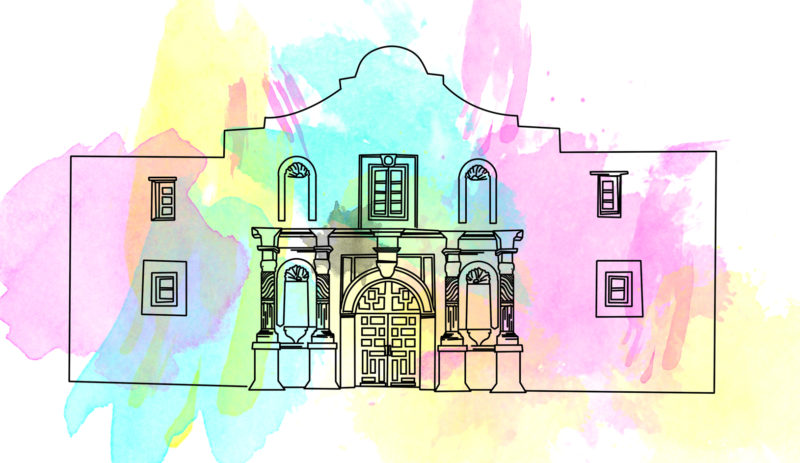Starting on September 6, the city will be buzzing with the annual World Heritage Festival, a week of programming designed to celebrate the San Antonio Missions and raise funds for the nonprofits that preserve the historical sites.
San Antonio has four Spanish missions that have, with the Alamo, been named World Heritage Sites by the United Nations Organization for Education, Science, and Culture (UNESCO). All of the structures date back to the 18th century and were built by Spanish settlers seeking to educate and convert Native American tribes. The Alamo was famously used during the Texas Revolution by the Second Flying Company of San Carlos de Parras and then by a Texian army during the Battle of the Alamo. Though monuments to bloodshed and colonialism, these structures are inextricably linked to San Antonio and Texas history.
Mission San José, the largest site, is often referred to as the “˜queen’ of San Antonio’s missions. The building was completed in 1782 by Coahuiltecan workers and Spanish designers using Texas limestone. It’s estimated that the mission housed and fed up to 300 occupants at a time. San José is home to the Rose Window, a famous and well-preserved example of Spanish Colonial ornamentation.
Mission Concepcià³n is one of the oldest unrestored stone churches in the United States. There isn’t much left of the vibrant exterior paint, but on the inside of the mission visitors can still see frescos that were brought to life roughly 250 years ago.
Mission San Juan Capistrano has a bell tower and a chapel that are still in use today. The mission is close to the river and sits on fertile land that once allowed for a completely self-sustaining community. There is a Romanesque archway on the site denoting the location of a half-completed church space that was abandoned in the late 1700s when the population of the mission began to decline.
Mission Espada is the southernmost structure in the city and maintains an irrigation system, an aqueduct and a dam. Espada was almost lost to a fire in the 1820s, but maintains an architecturally unusual, but unique set of doors and stone archways.
The World Heritage Festival will be hosting dozens of events in September, including lots of free and college-student friendly events that discuss history through art and community celebrations. The opening reception takes place on Wednesday, Sept. 6, at the Plaza de Armas Gallery. Contemporary artists will be displaying work inspired by oral history, photographs, maps and historical records.
On Thursday, Sept. 7, visitors can attend a sunset picnic at Mission San Juan Capistrano. Picnic dinners and drinks need to be pre-ordered, but jazz music and hayrides are provided. The following night, Mission Concepcià³n will be presenting “Restored By Light,” a night of light installations where one can see what the mission would have looked like with its original paintings and exterior frescos. Local music and food trucks will be there to complete the evening. In addition to the joint biking and walking event Tour de las Misiones on Saturday, Sept. 8, the Mission Park Pavilion will host local folk artists and musicians. The festival ends with a mass at Mission Concepcià³n on Sunday, Sept. 9.
San Antonio is an old city with a long and complicated history. The missions are centuries-old relics and reminders of war, occupation and colonialism, yet they are the foundations of the thriving city we know today. Historically significant findings are still pulled from the missions today and they continue to stand as valuable educational tools for organizations like the Legacy Program at the University of Texas at San Antonio and surrounding Texas school districts. The World Heritage Festival celebrates this aspect of the missions and will provide a rich platform for artists, musicians and makers alike to share their own history with the city.







